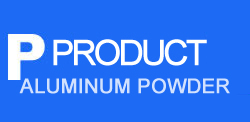
Aluminium Powder

Aluminum powder, commonly known as "silver powder", is a silver metallic pigment. It is made by adding a small amount of lubricant to pure aluminum foil, crushing it into a scaly powder, and then polishing it. The aluminum powder is light in weight, has high floating power, strong hiding power, and has good reflectivity to light and heat. After treatment, it can also become non-floating aluminum powder. Aluminum powder can be used to identify fingerprints and can also be used as fireworks. Aluminum powder is a large category of metal pigments due to its wide use, large demand, and variety.
Aluminum is a silver-gray metal with a relative mass of 26.98, a relative density of 2.55, and a purity of 99.5%. The melting point of aluminum is 685 degrees, the boiling point is 2065 degrees, and the melting endothermic is 323kj/g. Aluminum is reductive and easily oxidized. During the oxidation process Exothermic. During rapid oxidation, 15.5 kj/g of heat is released per gram. Aluminum is a ductile metal and easy to process. The oxide film on the surface of metal aluminum is transparent and has good chemical stability.
The aluminum powder used for the pigment refers to the aluminum powder whose particles are in the form of scaly, the surface is coated with a treatment agent, and is suitable for being used as a pigment. Aluminum powder paste is a mixture of pigment aluminum powder and solvent. Its use and characteristics are roughly the same as aluminum powder. Because it is easy to use, the output and dosage are larger.